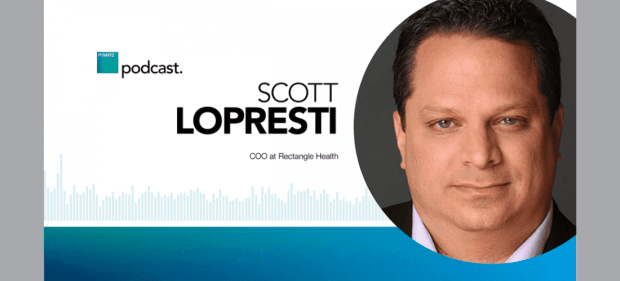Rectangle Health Shares Retail Prescription For Payment Plans

In the era of high deductibles and patients taking on an ever-increasing share of healthcare paid out of pocket, medical expenses are turning into a major problem.
According to a late 2020 Debt.com study, 56 percent of American adults have had unpaid medical bills sent to collections.
And the outcome, Rectangle Health Chief Operating Officer Scott LoPresti told PYMNTS, is bad for all sides of the care transaction. The patient has a collection company sent after them, an experience no one likes in any context, which tends to create ill will toward their care provider. That provider, meanwhile, in addition to having damaged the relationship with their patient, will get paid pennies on the dollar for the care they provide, taking a big bite out of their revenue.
Worse yet, this isn’t a problem borne entirely out of necessity, said LoPresti. It happens because providers don’t have the tools in place to help head it off.
“In most cases, if not all, the patients do want to pay, but we don’t make it easy for them to do so,” LoPresti said.
When a patient can engage with the practice and understand their balance upfront, they can prepare for it, which makes it easier to pay, he said.
The good news is that the tools are out there to take on this problem — and a host of other problems, he said. The better news is that although the industry has been historically slow to adopt new tech and tools before now, the pressures and pains of the last year amid the pandemic have opened provider minds to embracing digital tools as necessary to building better practices.
“We’ve always tried to promote it to our practices, but now more than ever, they’re asking for it,” LoPresti said. “They want to know how to accept electronic payments and how to layer in installments.”
Practices are now finally prepared to turn to payment processes to improve how they are proffering care, he said.
Care Now, Pay Later
In the last year or so, buy now, pay later (BNPL) installment payments have taken the retail world by storm. As LoPresti noted, Rectangle Health has offered payment plans to the healthcare vertical for years, but the popularity of BNPL has piqued new interest in their adoption. Rectangle Health’s payment platform includes built-in payment plan technology that does for providers what BNPL does for retailers.
“We embraced it more as a care now, pay later concept, since buy now, pay later is so associated with retail,” he explained. “It means the patient knows they’re going to receive the care they need. And then ultimately, the patient has negotiated with the practice upfront about that engagement and how it’s going to work, so there can be a payment structure that will allow them to pay over time.”
The patient wants to pay, and the practitioner wants to get paid — and a better payment process in the form of installments can make sure everyone gets what they want in the long term. The patient often needs flexibility in making those payments and a way to make them manageable, noted LoPresti. The practitioner can offer that because the structured, segmented nature of installments enables the patient to plan their payments and manage their cash flow across time. Moreover, he said, it just makes the process less painful for all parties involved.
“Nobody likes to have a bill outstanding and feel like they owe somebody money and have that hanging over their head,” LoPresti said. “So having that flexibility is an important concept.”
Creating a Contactless Environment
Like payment plan capability, the urgency of contactless payments didn’t much stand out to Rectangle Health’s healthcare clients prior to the pandemic. Now it does. As offices are trying to be as safe for patients as possible, they’ve realized the need to greatly modify how face-to-face interactions are done. They don’t want patients standing at the front desk for extended periods, handling cards or trading paperwork back and forth, noted LoPresti. In some cases, they don’t even want people in the waiting room, preferring that they wait in their cars until it’s their turn.
“We’ve always had a lot of tools for use in making online, electronic or contactless payments,” LoPresti said. “Those tools have been in existence for years within the payments industry, but they’ve never been as widely accepted as they are today.”
That’s because the industry as a whole has finally caught onto the idea — and now it must evolve along with everything else. A decade ago, said LoPresti, everything was paper-based, and today the paper is finally loosening its hold on the segment as the pandemic period has accelerated the evolution.
